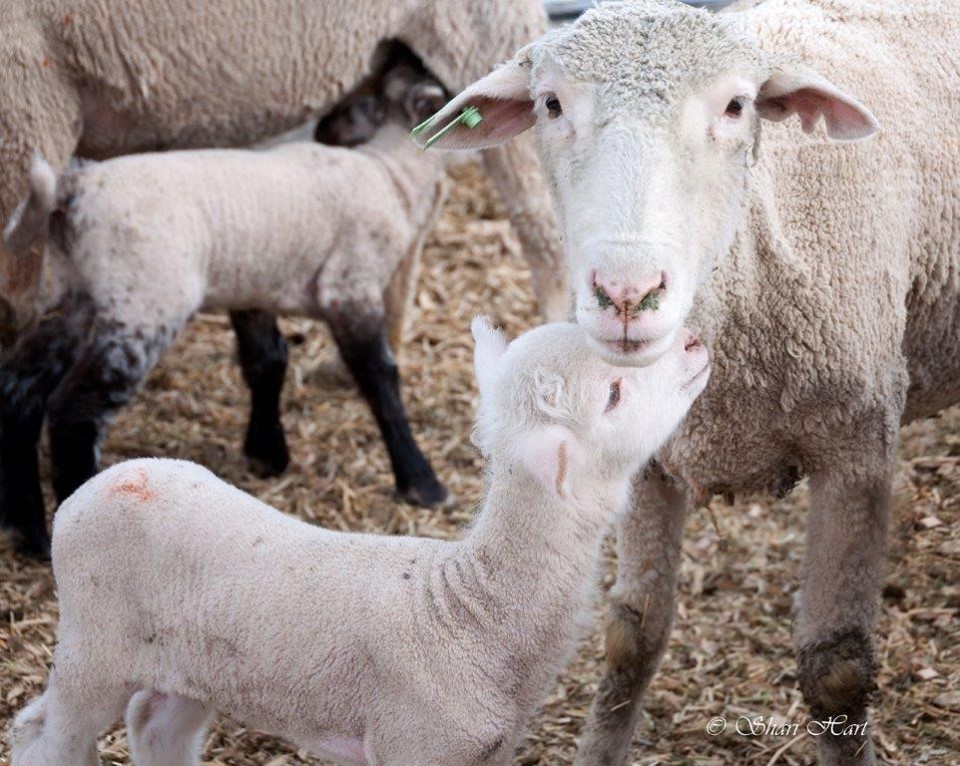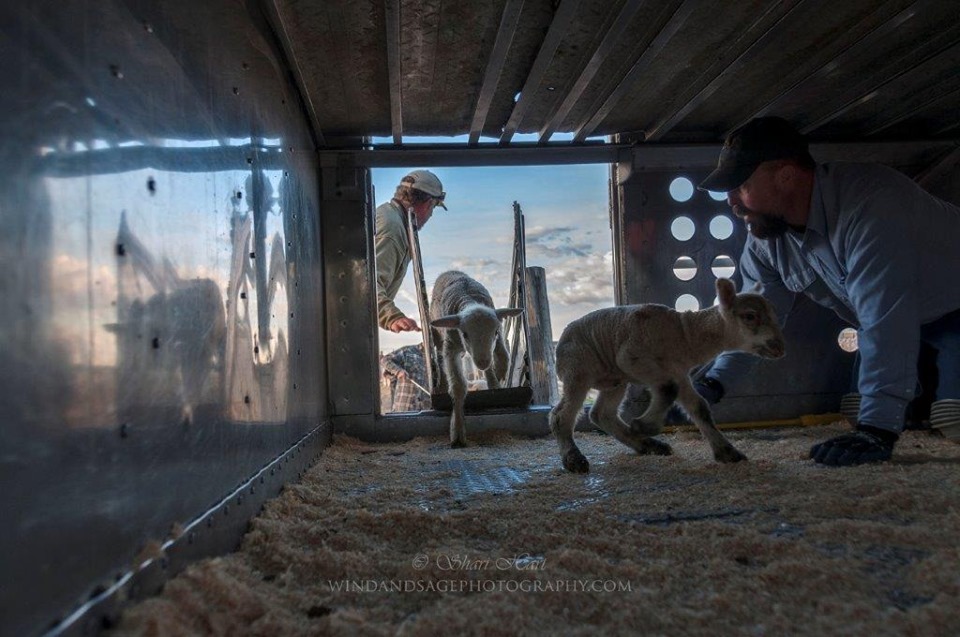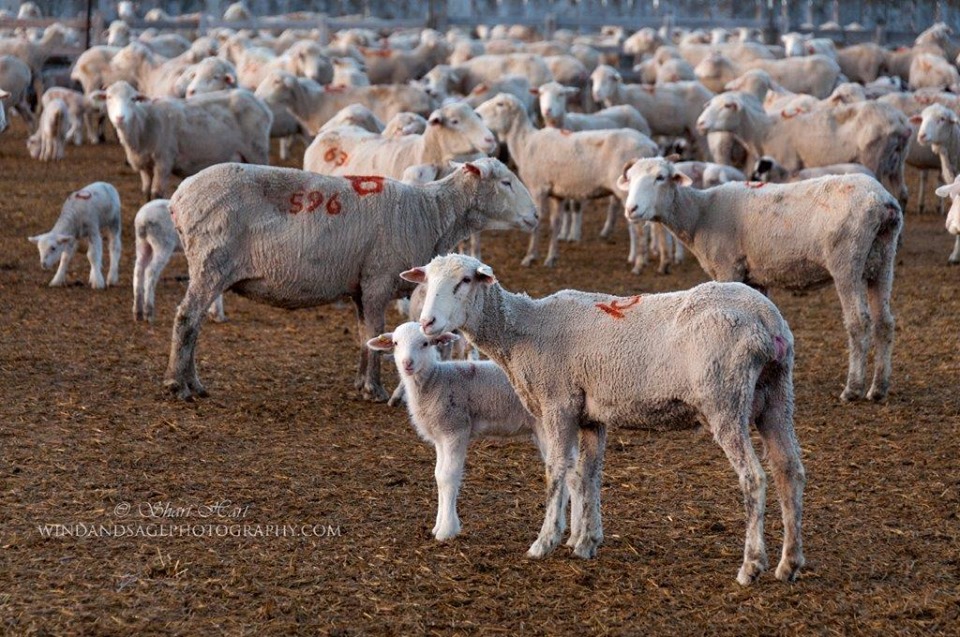Animal Health
The Idaho Wool Growers Association strives to maintain a high level of public trust and integrity in regards to animal welfare in the sheep industry. Idaho sheep producers take great pride in caring for and protecting the well-being of their livelihoods. They recognize their obligation and work hard to ensure ethical practices and products while caring for their livestock in order to provide the best quality products and increase consumer confidence. SHEEP SAFETY AND QUALITY ASSURANCE (SSQA)
During 1992 and 1993, The American Sheep Industry Association (ASI) and Colorado State University (CSU) conducted a sheep quality audit on lamb, mutton, pelts, milk and lanolin products on U.S. sheep. The result was the identification of challenges and problem areas in the industry that needed to be reformed. This led to the development of the SSQA program which was designed to help producers develop better preventative management strategies throughout the production cycle by utilizing both research and education. The SSQA was developed to educate producers in order to ensure the highest level of quality and safety while ensuring the well-being of sheep in the United States.
The Mission of SSQA is to maximize consumer confidence in, and acceptance of, sheep products by using research and education to improve management during the production of safe and high-quality sheep products.”
Follow the link below for more information on the SSQA program and their processes and procedures. Learn More About SSQA
INTERNAL PARASITE MANAGEMENT
The American Consortium for Small Ruminant Parasite Control website offers information on internal parasite control.
Articles include:
- Why does it take so long for new dewormers to become available on the market for small ruminants?
- Finding new drugs with anthelmintic properties is hard to do
- Drugs are expensive to develop
- Drugs need to meet stringent requirements for efficacy, safety and manufacturing
- What can we do in the interim?
BIOSECURITY
Biosecurity refers to management measures taken to prevent disease agents from being introduced and spreading to and/or from animal populations or their proximity.
Why do I need to be aware of biosecurity? Economically speaking, it is worth it because it:
- Minimizes risk of new disease,
- Controls and eradicates existing diseases, and
- Increases consumer confidence in the final product.
Biosecurity has three main components. These are:
- Isolation = the confinement of animals away from other animals
- Traffic control = movement of people, animals, vehicles and equipment
- Sanitation/Husbandry = cleanliness and care of animals and their environment.
For more information on biosecurity click here.
Additional Information pulled directly from ASI site’s Animal Health page:
MUMS
The Minor Use and Minor Species (MUMS) Animal Health Act of 2001 is similar to the human Orphan Drug Act of 1983. It is intended as a mechanism to provide FDA-authorized drugs for those less common species and indications. Specifically, it seeks to provide labeled drugs for needy minor species, including sheep, goats, game birds, emus, ranched deer, alpacas, llamas, deer, elk, rabbits, guinea pigs, pet birds, reptiles, ornamental and other fish, shellfish, wildlife, zoo and aquaria animals. The MUMS Act is designed to provide major species (cats, dogs, horses, cattle, swine, turkey, chickens) with needed therapeutics for uncommon indications, so called minor use.
Click here for more MUMS information: MUMS
NAHMS (National Animal Health Monitoring System)
NAHMS Sheep 2011 Study
The NAHMS Sheep 2011 study was conducted in 22 of the Nation’s major sheep-producing States. The study provides participants, stakeholders and the industry with valuable information representing 70.1 percent of U.S. farms with ewes and 85.5 percent of the U.S. ewe inventory (NASS 2007 Census of Agriculture).
Part 1: Reference of Sheep Management Practices in the United States, 2011
Items of Note
Population estimates and operator experience
Sheep breeds in the United States can be categorized by purpose, fiber type and face color. Black- or nonwhite-faced breeds include Suffolk, Hampshire, Shropshire, Oxford, and Southdown. These breeds are often considered meat producers, while white-faced breeds are more often used for wool production. Because each sheep breed offers superiority in some trait, producers often blend the breeds to gain the superior characteristics of each breed in offspring. These offspring are used to attain the phenotypic requirements of their operation’s type and geographical conditions. While the highest percentage of operations (44.7 percent) had black-faced wool breeds, the highest percentage of sheep and lambs (41.7 percent) were in the white-faced breed category. Sheep are a multi use species. For example, 81.6 percent of operations raised sheep for meat, 26.5 percent for seed or breeding stock, 15.8 percent for wool, and nearly 32.6 percent of operations raised sheep for more than one reason. When rapid means of communication with producers is important, it can be helpful to work with national or State industry organizations to promulgate necessary information. Over one-fifth of producers (22.9 percent) belonged to a national sheep organization, and almost one-third (29.0 percent) belonged to a State or local sheep industry association or club. These percentages vary by size of operation and by operation type.
Identification
Flock and individual animal identification (ID) are important tools used to reduce disease and increase productivity on U.S. sheep operations. Almost 9 of 10 operations (88.6 percent) used some form of individual ID for their sheep. The most commonly used form of either individual or flock ID was the free Scrapie Program ear tag.
For more information on Scrapie click here (link to the Scrapie page)
Lambing management
With the increase of smaller operations, non-traditional marketing methods, and improved reproductive techniques, more operations have the ability to lamb during the season that best suits their customers’ needs. The highest percentage of lambs were born from February through May, which allows producers to make the most use of available forage. Spring lambing also coincides with natural breeding and lambing seasons, when ewes are likely to produce larger lamb crops. For operations that managed their sheep primarily on the open range, docking may be the first time they view the sheep after lambing. At this time, lambs are tagged, castrated, docked, and vaccinated, and ewes are examined to ensure health and fecundity. Overall, 80.5 percent of lambs born alive were docked. Nearly 7 of 10 operations castrated ram lambs at an average age of 23.4 days, and more than 3 of 10 operations castrated ram lambs in the first 7 days of age.
For more information on NAHMS click here
Most Animal Antibiotics Used for Treating, Preventing Disease
Antibiotics Used in Food Animals -- This is a series of PowerPoint presentations from February 2012 that were used at a briefing for the U.S. House of Representatives.
The White Paper from the National Institute for Animal Agriculture's 2012 Antibiotics Conference in Columbus, Ohio, ”A One Health Approach to Antimicrobial Use & Resistance: A Dialogue for a Common Purpose” is now available. --Antimocrobial Use Resistance White Paper
The Animal Health Institute announced February 8 the results of a survey on antibiotic use in animals in the United States that indicates that the vast majority of antibiotics are used to treat and prevent disease. The survey is based on data from 1998 provided to AHI by its members. "Antibiotics are vitally important to veterinarians, pet owners and livestock producers who rely on these medicines to protect pets and farm animals from disease," said AHI President and CEO Alexander S. Mathews. "The Animal Health Institute is hopeful that this data will provide for greater public understanding of the importance of antibiotics in preventing and controlling disease."
The Centers for Disease Control and Prevention (CDC) estimate that more than 50 million pounds of antibiotics are produced in the United States each year. According to the AHI survey, 17.8 million pounds -- 36 percent -- are used in animals. Of the total used in animals, 14.7 million pounds -- 83 percent -- are used for prevention and treatment of disease. Of all antibiotic uses, only 3.1 million pounds -- 6.1 percent -- are used for growth promotion. Antibiotics may be approved for use in both companion and farm animals. There are more than 115 million cats and dogs, and more than 7 million sheep, 6.9 million horses, 7.5 billion chickens, 292 million turkeys, 109 million cattle and 92 million pigs in the United States. "In addition to protecting the health of America's pets, antibiotics help farmers maintain healthier animals, which helps make America's food supply the world's safest," Mathews added.
The Food and Drug Administration regulates all antibiotics for animals. The approval process is stringent and scientific, requiring that all antibiotics be proven safe for both animals and humans.
(Source: February 11, 2000 ASI WEEKLY)
For more information on use on antibiotics in the sheep industry click here
